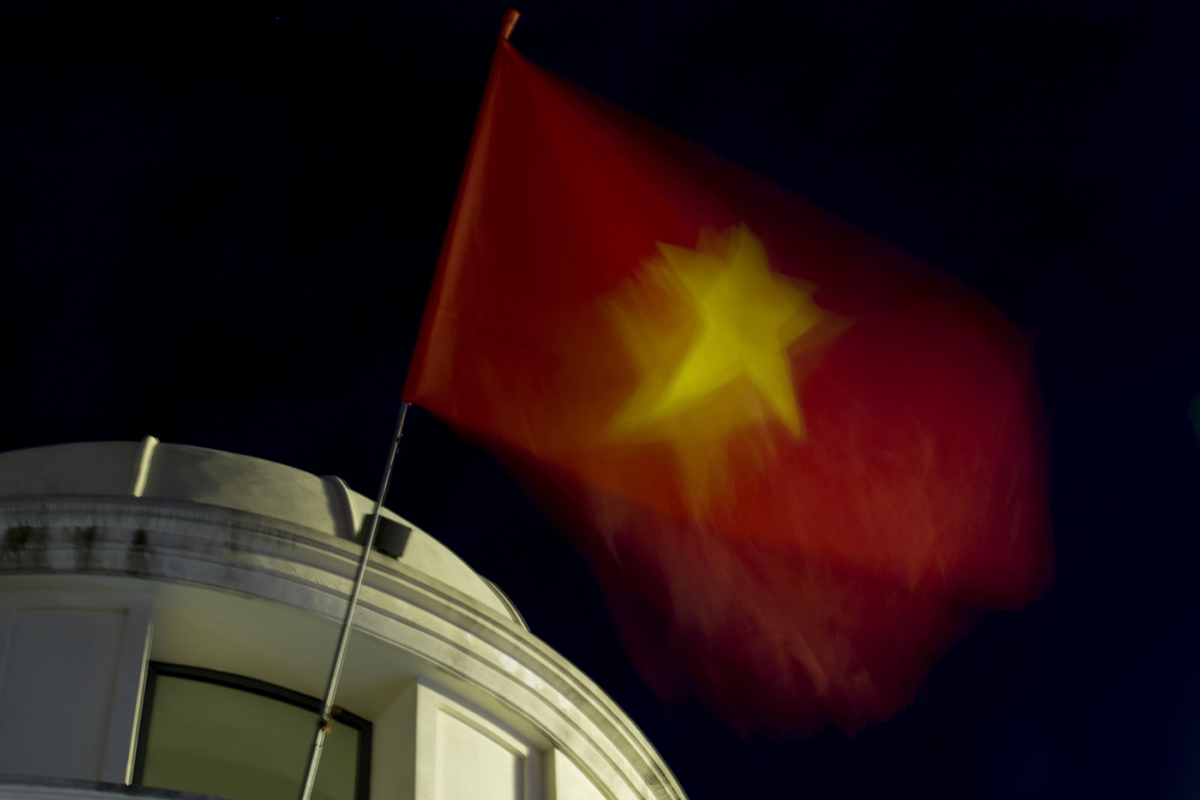As China continues to transform disputed territory in the South China Sea into features capable of sustaining air and naval bases, Vietnam is also upgrading areas it occupies.
Images taken by DigitalGlobe satellites in September show new facilities including a possible dry dock on West London Reef in the Spratly Island chain, around 680 kilometers southeast of Ho Chi Minh City, that could allow boats to stop for maintenance and patrol for longer periods.
While the work is vastly outweighed by what China is doing it suggests Hanoi wants to hold its ground over the contested waterway, even if it risks upsetting Beijing. In August, Philippine President Rodrigo Duterte ordered a construction halt on a 500 square-meter sand bar in the area after a protest from China.
“Maintaining and even consolidating a military and non-military presence has been consistently one of the key approaches for Vietnam’s strategy for the South China Sea,” said Alexander Vuving, a political analyst at the Asia-Pacific Center for Security Studies in Hawaii.
Vietnam has reclaimed about 120 acres across 10 islets since 2014, according to the Washington DC-based Asia Maritime Transparency Initiative, extending runways and adding radar and patrol capabilities. By comparison, China has reclaimed more than 3,200 acres on seven features in the Spratlys, building ports, lighthouses and runways it says are mostly for civilian purposes or defense.
China’s claims to more than 80 percent of the South China Sea, which carries around $3.4 trillion worth of global trade a year, overlap with the Philippines, Brunei, Malaysia, Taiwan, and Vietnam. In the past year, Hanoi has become the most vocal defender against China’s assertions.
Its latest upgrade to West London Reef comes after China reportedly pressured Vietnam to halt drilling in a contested area leased to Spain’s Repsol SA., said Bill Hayton, an associate fellow at Chatham House.
“Vietnam’s response to the Repsol incident has been a modest expansion on its islands,” said Hayton, who wrote "The South China Sea: The Struggle for Power in Asia". “Many of the decisions to expand the island facilities would have been taken before the drilling episode, but that is certainly giving some impetus.”
Code of Conduct
Another potential source of friction between Hanoi and Beijing is renewed talks over a Code of Conduct for the South China Sea between China and the 10-member Association of Southeast Asian Nations.
Despite endorsing a one-page framework in August, which calls on parties to commit to the principles of the United Nations Convention on the Law of the Sea, China wants the code to be voluntary, whereas Vietnam wants it to be legally binding.
“Vietnam would sign a legally binding Asean-China code of conduct if it brings it and other countries benefit,” according to Rear Admiral Le Ke Lam, a former Vietnam Naval Academy director. “But China would never sign it.”
Vietnam’s Foreign Ministry did not respond to emailed questions about the land reclamation or whether the Code of Conduct should be legally binding. Le said Vietnam’s South China Sea infrastructure program was confined to minor reclamation on existing islands.
Vietnam suffered a setback last year after the new Philippine president chose not to pursue further an international court ruling that dismissed Beijing’s South China Sea claims. The case, brought by Duterte’s predecessor Benigno Aquino, was supported by Vietnam.
In the absence of support from the Philippines, Vietnam has sought to improve ties with Indonesia, which has shown signs of pushing back against Chinese encroachment near the Natuna Islands that Beijing claims are part of its traditional fishing grounds.
In June 2016, President Joko Widodo held a cabinet meeting on a warship near the islands, and Indonesia later renamed the northern reaches of its exclusive economic zone in the South China Sea as the North Natuna Sea. – Bloomberg
Recommended stories:
